TRIETHANOLAMINE HYDROCHLORIDE
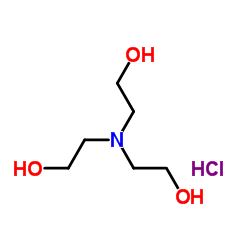
TRIETHANOLAMINE HYDROCHLORIDE structure
|
Common Name | TRIETHANOLAMINE HYDROCHLORIDE | ||
|---|---|---|---|---|
| CAS Number | 637-39-8 | Molecular Weight | 185.649 | |
| Density | N/A | Boiling Point | 335.4ºC at 760 mmHg | |
| Molecular Formula | C6H16ClNO3 | Melting Point | 177-179 °C(lit.) | |
| MSDS | USA | Flash Point | 185ºC | |
| Name | Triethanolamine hydrochloride |
|---|---|
| Synonym | More Synonyms |
| Boiling Point | 335.4ºC at 760 mmHg |
|---|---|
| Melting Point | 177-179 °C(lit.) |
| Molecular Formula | C6H16ClNO3 |
| Molecular Weight | 185.649 |
| Flash Point | 185ºC |
| Exact Mass | 185.081863 |
| PSA | 63.93000 |
| Storage condition | Store at RT. |
| Water Solubility | H2O: 1 M at 20 °C, clear, colorless |
Synonym:None Section 2 - COMPOSITION, INFORMATION ON INGREDIENTS
Risk Phrases: None Listed. Section 3 - HAZARDS IDENTIFICATION EMERGENCY OVERVIEW
Not available. Potential Health Effects Eye: May cause severe eye irritation. May result in corneal injury. May cause painful sensitization to light. May cause conjunctivitis. Skin: May cause skin irritation. May cause photosensitive skin reactions in certain individuals. Ingestion: May cause irritation of the digestive tract. Inhalation: May cause respiratory tract irritation. Chronic: Prolonged or repeated skin contact may cause dermatitis. Section 4 - FIRST AID MEASURES Eyes: Flush eyes with plenty of water for at least 15 minutes, occasionally lifting the upper and lower eyelids. Get medical aid immediately. Skin: Get medical aid. Flush skin with plenty of water for at least 15 minutes while removing contaminated clothing and shoes. Ingestion: If victim is conscious and alert, give 2-4 cupfuls of milk or water. Never give anything by mouth to an unconscious person. Get medical aid immediately. Inhalation: Get medical aid immediately. Remove from exposure and move to fresh air immediately. If not breathing, give artificial respiration. If breathing is difficult, give oxygen. Notes to Physician: Section 5 - FIRE FIGHTING MEASURES General Information: As in any fire, wear a self-contained breathing apparatus in pressure-demand, MSHA/NIOSH (approved or equivalent), and full protective gear. Not flammable, but reacts with most metals to form flammable hydrogen gas. Use water spray to keep fire-exposed containers cool. Extinguishing Media: Substance is nonflammable; use agent most appropriate to extinguish surrounding fire. Section 6 - ACCIDENTAL RELEASE MEASURES General Information: Use proper personal protective equipment as indicated in Section 8. Spills/Leaks: Large spills may be neutralized with dilute alkaline solutions of soda ash (sodium carbonate, Na2CO3), or lime (calcium oxide, CaO). Clean up spills immediately, observing precautions in the Protective Equipment section. Absorb spill using an absorbent, non-combustible material such as earth, sand, or vermiculite. Do not use combustible materials such as sawdust. Section 7 - HANDLING and STORAGE Handling: Wash thoroughly after handling. Remove contaminated clothing and wash before reuse. Use with adequate ventilation. Avoid contact with skin and eyes. Avoid ingestion and inhalation. Storage: Keep away from heat and flame. Do not store in direct sunlight. Store in a cool, dry, well-ventilated area away from incompatible substances. Section 8 - EXPOSURE CONTROLS, PERSONAL PROTECTION Engineering Controls: Use adequate general or local exhaust ventilation to keep airborne concentrations below the permissible exposure limits. Exposure Limits CAS# 637-39-8: CAS# 7732-18-5: Personal Protective Equipment Eyes: Wear appropriate protective eyeglasses or chemical safety goggles as described by OSHA's eye and face protection regulations in 29 CFR 1910.133 or European Standard EN166. Skin: Wear appropriate protective gloves to prevent skin exposure. Clothing: Wear appropriate protective clothing to prevent skin exposure. Respirators: Follow the OSHA respirator regulations found in 29 CFR 1910.134 or European Standard EN 149. Use a NIOSH/MSHA or European Standard EN 149 approved respirator if exposure limits are exceeded or if irritation or other symptoms are experienced. Section 9 - PHYSICAL AND CHEMICAL PROPERTIES Physical State: Liquid Color: colorless Odor: Not available. pH: 1.6 Vapor Pressure: Not available. Viscosity: Not available. Boiling Point: Not available. Freezing/Melting Point: Not available. Autoignition Temperature: Not applicable. Flash Point: Not applicable. Explosion Limits, lower: Not available. Explosion Limits, upper: Not available. Decomposition Temperature: Not available. Solubility in water: Miscible with water. Specific Gravity/Density: 1.01 (Water=1) Molecular Formula: Mixture Molecular Weight: Section 10 - STABILITY AND REACTIVITY Chemical Stability: Stable under normal temperatures and pressures. Conditions to Avoid: Incompatible materials, light. Incompatibilities with Other Materials: Acetate, acetic anhydride, alcohols + hydrogen cyanide, 2-aminoethanol, ammonium hydroxide, calcium carbide, calcium phosphide, cesium acetylene carbide, cesium carbide, chlorosulfonic acid, 1,1-difluoroethylene, ethylene diamine, ethyleneimine, fluorine, lithium silicide, magnesium boride, mercuric sulfate, oleum, perchloric acid, potassium permanganate, b-propiolactone, propylene oxide, rubidum acetylene carbide, rubidum carbide, silver perchlorate + carbon tetrachloride, sodium, sodium hydroxide, sulfuric acid, uranium phosphide, vinyl acetate. Substance polymerizes on contact with aldehydes or epoxides. Hazardous Decomposition Products: Hydrogen chloride, hydrogen gas. Hazardous Polymerization: Will not occur. Section 11 - TOXICOLOGICAL INFORMATION RTECS#: CAS# 637-39-8: KL9346500 CAS# 7732-18-5: ZC0110000 LD50/LC50: Not available. CAS# 7732-18-5: Oral, rat: LD50 = >90 mL/kg. Carcinogenicity: Ethanol, 2,2',2''-nitrilotris-, hydrochloride - Not listed by ACGIH, IARC, or NTP. Water - Not listed by ACGIH, IARC, or NTP. Other: See actual entry in RTECS for complete information. Section 12 - ECOLOGICAL INFORMATION Ecotoxicity: Trout LC100=10 mg/L/24H Shrimp LC50=100-330 ppm Starfish LC50=100-330mg/L/48H Shore crab LC50=240 mg/L/48H Chronic plant toxicity=100 ppm Section 13 - DISPOSAL CONSIDERATIONS Products which are considered hazardous for supply are classified as Special Waste and the disposal of such chemicals is covered by regulations which may vary according to location. Contact a specialist disposal company or the local waste regulator for advice. Empty containers must be decontaminated before returning for recycling. Section 14 - TRANSPORT INFORMATION IATA No information available. IMO No information available. RID/ADR No information available. Section 15 - REGULATORY INFORMATION European/International Regulations European Labeling in Accordance with EC Directives Hazard Symbols: Not available. Risk Phrases: Safety Phrases: WGK (Water Danger/Protection) CAS# 637-39-8: 1 CAS# 7732-18-5: No information available. Canada CAS# 637-39-8 is listed on Canada's DSL List. CAS# 7732-18-5 is listed on Canada's DSL List. CAS# 637-39-8 is not listed on Canada's Ingredient Disclosure List. CAS# 7732-18-5 is not listed on Canada's Ingredient Disclosure List. US FEDERAL TSCA CAS# 637-39-8 is listed on the TSCA inventory. CAS# 7732-18-5 is listed on the TSCA inventory. SECTION 16 - ADDITIONAL INFORMATION N/A |
CHEMICAL IDENTIFICATION
HEALTH HAZARD DATAACUTE TOXICITY DATA
|
| Personal Protective Equipment | Eyeshields;Gloves;type N95 (US);type P1 (EN143) respirator filter |
|---|---|
| Hazard Codes | Xi |
| Risk Phrases | R36/37/38 |
| Safety Phrases | S22-S24/25 |
| RIDADR | NONH for all modes of transport |
| WGK Germany | 1 |
| RTECS | KL9346500 |
| HS Code | 2922132020 |
| Precursor 2 | |
|---|---|
| DownStream 8 | |
| HS Code | 2922132020 |
|---|---|
| Summary | 2922132020 2,2',2''-nitrilotriethanol hydrochloride。supervision conditions:23(import license for dual-use item and technologies,export license for dual-use item and technologies)。VAT:17.0%。tax rebate rate:9.0%。MFN tarrif:6.5%。general tariff:30.0% |
|
Carbopol 934, 940 and Ultrez 10 as viscosity modifiers of palm olein esters based nano-scaled emulsion containing ibuprofen.
Pak. J. Pharm. Sci. 26(1) , 75-83, (2013) Micro-emulsions and sometimes nano-emulsions are well known candidates to deliver drugs locally. However, the poor rheological properties are marginally affecting their acceptance pharmaceutically. Th... |
|
|
Anti-oxidative and anti-inflammatory effects of lipoic acid in rat liver.
Microbiology 69 , 270-6, (2015) Lipopolysaccharide (LPS) is a key inflammatory component of Gram-negative bacteria, which after entering the systemic circulation contributes to the development of septic hepatic failure.The aim of th... |
|
|
Facile synthesis of cysteine and triethanolamine capped CdTe nanoparticles.
Colloids Surf. B Biointerfaces 101 , 450-456, (2013) Cysteine and triethanolamine capped CdTe nanoparticles have been synthesized using a simple aqueous solution based method. This method involves the reaction of tellurium powder with sodium borohydride... |
| 2,2',2''-nitrilotriethanolhydrochlorid |
| TRIETHANOLAMINE HYDROCHLORIDE |
| Ethanol, 2,2',2''-nitrilotris-, hydrochloride (1:1) |
| EINECS 211-284-2 |
| 2,2',2''-Nitrilotriethanol hydrochloride |
| MFCD00012596 |
| 2-Hydroxy-N,N-bis(2-hydroxyethyl)ethanaminium chloride |
| 2,2',2''-Nitrilotriethanol hydrochloride (1:1) |
| 2-[bis(2-hydroxyethyl)amino]ethanol,hydrochloride |
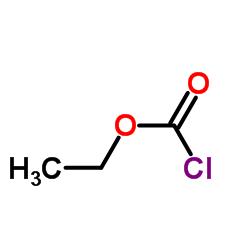 CAS#:541-41-3
CAS#:541-41-3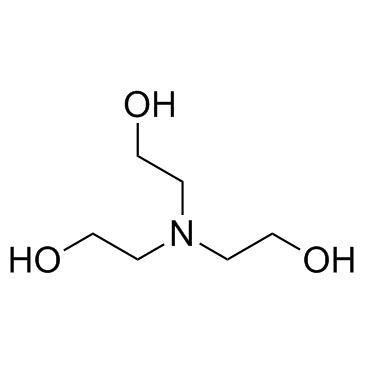 CAS#:102-71-6
CAS#:102-71-6 CAS#:17422-32-1
CAS#:17422-32-1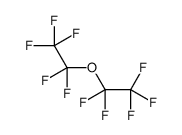 CAS#:358-21-4
CAS#:358-21-4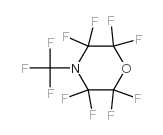 CAS#:382-28-5
CAS#:382-28-5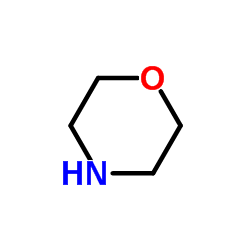 CAS#:110-91-8
CAS#:110-91-8 CAS#:109-01-3
CAS#:109-01-3 CAS#:622-40-2
CAS#:622-40-2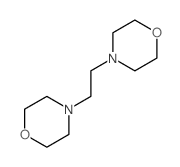 CAS#:1723-94-0
CAS#:1723-94-0 CAS#:6425-39-4
CAS#:6425-39-4